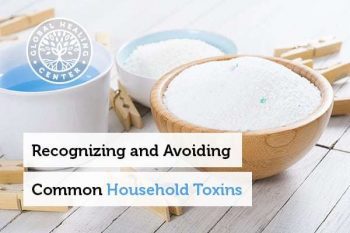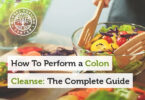January 24th, 2018
Guest writer for Wake Up World
Many people don’t realize the number of toxins they are surrounded by in their home. According to the Centers for Disease Control and Prevention, the air in homes and other buildings is usually more polluted than the air outdoors, even in major cities. With many new chemicals introduced to the world’s markets every year, household toxins are more prevalent now than ever before. These toxins are found in many household items, including mattresses, floors, furniture, and cosmetics. Ridding your house of these harmful substances can make your home healthier, happier, and safer.
Health Issues Caused by Toxic Household Products
Most household products, whether they’re cosmetics, hygiene products, or cleansers, contain chemicals that are linked to health issues, including:
[pro_ad_display_adzone id=”110028″]
- Reduced sperm count
- Hormone disruption
- Thyroid and reproductive issues
- Headaches
- Liver and kidney issues
- A weakened immune system
- Respiratory complications
Common Household Products With Harmful Chemicals
When you clean your house, make it smell fresh, or discourage insects from entering it, you are more than likely using products that contain chemical toxins. Common products that contain harmful chemicals include:[1]
- Air fresheners
- Polishing agents
- Scouring powders
- Surface cleaners
- Insecticides
Common Hygiene and Beauty Products With Harmful Chemicals
Staying clean and looking your best may not be as beneficial as you think if the products you use contain harmful chemicals. It’s important to know which products need to be replaced or avoided. The following are the hygiene and beauty products most likely to contain toxic chemicals:
- Deodorant
- Perfume and cologne
- Soap (including antibacterial soap) and detergent
- Makeup and cosmetics
- Mouthwash and toothpaste
- Moisturizer and sunscreen
- Shampoo and other hair care products
- Nail polish and nail polish remover
What Chemicals Are Found in These Products?
Maintaining a healthy home is key to living a healthy life, and the only way to accomplish this is by thoroughly vetting the products you’re considering introducing to your home. To minimize your exposure to toxins and their effects, check the labels on hygiene and beauty products for these harmful chemicals:
- Ammonia
- Mica
- Chlorine
- Fluoride
- Triclosan
- Petroleum jelly
- Sodium hydroxide
- DBP (Dibutyl phthalate)
- DEA (Diethanolamine)
- PTFE (Polytetrafluoroethylene)
- SLS/SLES (Sodium laureth sulphate)
- Formaldehyde (DMDM hydantoin, diazolidinyl urea, imidazolidinyl urea)
- BHA/BHT (Butylated hydroxyanisole, butylated hydroxytoluene)
- Coal tar dye (P-phenylenediamine)
Using natural alternatives to chemical-based products can significantly reduce your exposure to harmful toxins and minimize the damage they cause.
Related reading: Skin Science – Debunking Cosmetic Industry Propaganda
Toxins in the Bedroom
Sleep is an important activity that helps re-energize the body. It plays a major role in supporting memory, immune function, metabolism, learning, and other critical functions. Unfortunately, toxins are concentrated in the bedroom and can affect your ability to get restful sleep.[2]
Mattresses
One of the most important items in your bedroom is the mattress on which you sleep. Foam mattresses—including baby and children’s mattresses—have become very popular over the last decade but may hold toxic flame retardants. When these chemicals are released, they can be inhaled and negatively impact your body’s ability to heal and detoxify. Look for a non-toxic mattress made with organic stuffing and without flame retardants.
Additionally, mattresses should never be placed on a pressed wood or plywood bed frame. These two types of wood are notorious for releasing formaldehyde and other chemicals.
We can’t talk about mattress toxins without mentioning dust mites. These microscopic creatures are potent allergens. A member of the spider family, mites feast on human skin flakes and leave their excrement in your mattresses, pillows, sheets, furniture, and drapes. Regularly cleaning these areas can reduce your exposure to these organisms and alleviate the respiratory issues they cause. For next-level protection, get a protective cover for your mattress and wash your sheets every three days with fragrance- and chemical-free laundry detergent.[3, 4]
Electronics
When taking inventory of the sources of toxins in your bedroom, don’t forget about TVs, clocks, radios, and other electronic devices. Devices that have a screen emit blue light which slows the production of melatonin, the hormone necessary for healthy sleep cycles. This is one reason why using your cell phone before bed affects sleep quality.
Electronic devices also emit a small amount of electromagnetic radiation. If they are cracked, or their insides are otherwise exposed, toxic metals such as beryllium, lead, mercury, arsenic, and barium can leak. The best strategy for a toxic-free sleep environment is to keep electronic devices out of your bedroom altogether.[5, 6, 7]
Carpeting
Perfluorinated compounds (PFCs) are a group of extremely toxic materials that don’t break down in the environment. The most toxic of these is a chemical called perfluorooctanoic acid (PFOA), which is used to produce carpeting and upholstery. These chemicals make their way into household dust, which means you are inhaling them every day. If it’s in your budget, natural hardwood or stone flooring is easier to clean and doesn’t contain harsh chemicals or carry harmful bacteria. Hardwood and stone floors are an effective way to reduce exposure to PFCs and other contaminants that accumulate in carpet dust.
If carpeting is necessary, use a well-sealed vacuum cleaner with a HEPA filter. This kind of filter reduces the amount of dust and bacteria that blows out into the air while cleaning. Steam cleaning can be an effective solution for killing bacteria but really should be handled by a qualified, experienced professional who can produce the benefits of steam cleaning without the common, unintended consequence of mold and mildew growth.
If you want carpet in your house, choose carpet made from natural fibers like sisal or hemp that has achieved Green Label Plus Certification. This type of carpet is resistant to mold and mildew, making it ideal for high-moisture areas.[8, 9]
Toxins in the Bathroom
The number of toxins found in the bathroom is astonishing. The area under the sink, cosmetics, the toilet, toothbrushes, and the floor can all be home to harmful, biological pollutants. These toxins are living organisms or the by-products of living organisms. Biological pollutants are small, travel through the air, and can be easily inhaled.[10]
Toothbrushes
Whenever you flush with the toilet lid open, fecal matter becomes airborne and lands all over, including on your toothbrush. Close the lid before flushing to avoid ending up with a “poopbrush.”
Viruses and bacteria that can end up on your toothbrush and make their way into your body include:
- Flu virus
- E. Coli virus
- Oral herpes
- Staphylococci or staph bacteria
- Porphyromonas gingivalis
You might be surprised to learn that toothbrush cups can hold some of the worst germs in your house. They should be disinfected often, or replaced with an open-air holder. Thoroughly wash your toothbrush after every use and put it away dry, not wet. Replace it every two to three months.[11]
Sinks
Research shows that bathroom sinks, notably the drain, facilitate the growth of a fungus called Fusarium which is a common source of infections in humans. In addition to fungus, sinks can harbor bacteria and chemical residue from home cleaners. Use organic cleaning products to keep this area of your bathroom clean and promote a healthy environment.[12]
Showers
Many people have water filters for their tap water, but they don’t consider a filter for their bath or shower. Tap water is typically treated with chlorine to counteract pathogens and harmful organisms. However, this chemical actually makes the water toxic. Research has shown that when chlorine mixes with organic compounds in water, by-products called trihalomethanes (THMs) are produced. THMs are harmful because they produce free radicals in the body which can trigger cell damage.
Water can also contain a carcinogen called chloroform, which is easily absorbed through the skin or inhaled if heated.[13] Buy a shower head with a filter or install a whole-house water purification system to reduce or eliminate your exposure.
Shower curtains, floors, and walls can also contain biological pollutants like fungus, mold, mildew, and other types of unhealthy organisms regardless of how much soap, water, and shampoo wash over them. Ironically, the shower is one of the most germ-friendly places in your home and should be cleaned regularly.[14, 15]
Floors
The floor of your bathroom is a haven for germs, dirt, and harmful toxins of all types. Cleaning the bathroom floor one to two times a week with organic cleaning products is essential.
Rugs in the bathroom are also a significant repository of toxins and are difficult to clean. A hemp rug, which is more resilient to mold and mildew, is a perfect solution to keep you from slipping after getting out of the tub or shower.
Keep in mind that the efficacy of removing surface contaminants can only go so far when the floor itself contains toxic chemicals, as is the case with vinyl flooring. Significant amounts of phthalate plasticizers, synthetic chemicals that have been linked to many health issues, are present in this flooring. Polyvinyl chloride (PVC or vinyl) is the most toxic of plastics because it emits dioxins. The Environmental Protection Agency has warned that these are some of the most toxic, carcinogenic chemicals known.[16, 17, 18]
Toxins in the Kitchen
[pro_ad_display_adzone id=”110030″]
Food-related bacteria is one of the most common contaminants in kitchens, especially on counters. When grocery bags, mail, keys, purses, and various household products meet the counter, they can become vehicles to carry and deposit bacteria to other places in your home.
Since bacteria can spread anywhere, including from one surface to another, keep your hands clean and wash kitchen surfaces before and after meal preparation to keep foreign contaminants at bay. It’s also a good idea to wash hands after handling raw meat, especially before touching another food. If the bacteria get into food, it can cause food-borne illnesses.
Food-related bacteria are also found on many kitchen utensils and gadgets. Cutting boards are especially prone to bacteria due to the cuts made in the wood or plastic. A natural cutting board made of bamboo is resistant to these cuts. Having one board for meat and another for fruits and vegetables is another thoughtful strategy for avoiding cross-contamination, which is one of the leading reasons for food-borne illnesses.
Clean the floor before and after preparing meals to keep insects away and bacteria in check. Use a natural disinfectant to clean your kitchen and the items in your kitchen, including:[19]
- Can opener
- Dishrags
- Sponges
- Garbage disposal
- Drains
- Refrigerator
- Food processor
- Blender
Lastly, another source of toxicity in your kitchen may be your microwave. According to the U.S. Food & Drug Administration, microwaves have been regulated since 1971 and are subject to safety performance standards. Regardless, radiation emitted from these ovens can be harmful if leaked due to a bent handle or malfunctioning door.[20]
Toxins Outdoors and in the Garage
The area outside your home is host to many harmful toxins that can make their way into your home. Most of these toxins are found in paint, paint thinners, household cleaners, auto fluids, pesticides, insect repellants, and more.
Dangerous Products in the Garage
Products like paint thinners, paint cans, and fuel containers can be toxic to their immediate environment, and harmful if inhaled or not properly ventilated and stored. The best way to identify which products need attention is to look around your garage and ask these questions:
- Are there any unlabeled containers?
- Are any products expired?
- Are any products inadequately sealed?
- Are any products leaking?
- Do safer alternatives exist?
If you answered “yes” to one or more of these questions, these products need to be disposed of properly. Never throw toxic chemicals in the garbage where they will harm the environment. Always store dangerous products according to the manufacturer’s recommendations and out of the reach of children and pets.[21]
Pest Control and Mulch
Chemical-based bug repellents and pest control products contain harmful elements and are best replaced with organic, plant-based substitutes. Some of these natural repellents can either be applied to certain areas of the yard, or crushed and rubbed on the skin to ward off flies, mosquitoes, and fleas.[22] The best plants for repelling insects include:
- Basil
- Lemon balm
- Citronella
- Lavender
- Catnip
- Peppermint
- Marigold
To ensure a toxic-free yard that’s a healthy place for children and pets, accentuate your landscaping with organic mulch that is free of pesticides and other chemicals. Be aware that some plants and herbs may be poisonous if ingested, so make sure to do your research and put them where little hands or paws can’t reach them.
Natural Ways to Rid Your Home of Toxins
Non-toxic, organic cleansers are inexpensive and can be made at home using the following ingredients:[23]
- Purified water: Free of chemicals and contaminants
- Vinegar: Contains natural acid and antibacterial elements to eliminate and disinfect
- Baking soda: Lifts stains, brightens, and deodorizes
- Peppermint: Has antibacterial and insect repellent qualities
- Lemon juice: Kills mildew, mold, and eliminates odors
- Essential oils: Provide natural, non-toxic fragrances
- Castile soap: Naturally olive oil-based
Cleaning Your Toilet
This recipe will help disinfect and clean your toilet. Add a spritz of lemon afterward for a fresh smell.
- 1 cup baking soda
- 2 cups white vinegar
Pour the baking soda into the toilet, follow with the vinegar. This combination will bubble and fizz. When the reaction subsides, scrub your toilet with a toilet brush.
Sink and Tub Scrub
This recipe is a great, natural way to keep sinks and tubs clean.
- 1 cup baking soda
- ½ cup castile soap
- 3-4 drops tea tree or peppermint essential oil
Place the baking soda in a bowl. Slowly add the soap until the mixture thickens. Add in a few drops of tea tree or peppermint essential oil. Scoop the mixture onto a sponge or damp cloth and give your bathtub and sinks a good scrubbing.
All-Purpose Spray
This spray can be used on just about anything. Do yourself a favor and always keep a bottle handy.
- 1 cup white vinegar
- 2 cups water
- 1 tablespoon castile soap
- 3-4 drops essential oil of your choice
Combine all of the ingredients in a spray bottle. Spray on any areas that need a good cleaning. The vinegar, which is antibacterial, will help remove mildew and mold.
Clog Remover
Foul-smelling clog removers can leave residual toxins in your drain and they’re harmful to inhale. This organic recipe works just as well and is a safe way to resolve a clogged drain.
- ½ cup baking soda
- ½ cup white vinegar
- Gallon of hot water
Pour the baking soda down the drain, follow it with the vinegar. Let it fizz for 10 minutes then pour a gallon of boiling water down the drain. Repeat with more water if necessary. If the clog persists, use a drain snake from a hardware store.
Mirror Polish
Chemical-based glass and mirror cleaning products release toxins into the air, so a natural cleaner is best. This recipe is effective and streak-free.
- White vinegar
- Newspaper
Spritz some white vinegar on a mirror and wipe with a crumpled newspaper until clean.
Natural Air Purifiers
Certain types of plants can reduce toxic chemicals such as trichloroethylene, benzene, formaldehyde, carbon monoxide, and xylene. Putting these plants strategically throughout your house and yard is a natural, effective way to maintain a healthier home environment.[24]
- Aloe vera
- Mother-in-law’s tongue
- Purple waffle plant
- Golden pothos
- Rubber plant
- Areca palm
- Peace lily
- Money plant
- English ivy
- Red-edged dracaena
- Spider plant
Using plants as a natural means to detoxify the air in your home is ideal. However, if you are allergic to certain plants, or your home environment makes it difficult to use plants, electric air purifiers can reduce the pollutants and allergens in your house.
What’s Your Story?
What’s your experience with detoxifying your home? What strategy did you follow? Have you switched to organic cleansers and beauty products? How did they work? We’d love to hear your story. Please share it with us in the comments section below, or join the conversation on Facebook.
References:
- “Perchloroethylene (PCE, PERC) – Toxic Chemicals and Environmental Health Risks Where You Live and Work – Text Version.” Tox Town. U.S. National Library of Medicine, 31 Mar. 2016.Accessed 17 Nov. 2017.
- “Benefits of sleep.” Harvard Medical School.harvard.edu.Accessed 20 Nov. 2017.
- “Healthy homes – bedroom.” The Centers for Disease Control and Prevention. cdc.gov. Accessed 20 Nov. 2017.
- “Dust mites.” American Lung Association. lung.org. Accessed 20 Nov. 2017.
- Krishnan S, et al. “The Effect of Electronic Device on Human Health.” Scientific & Academic Publishing. sapub.org. 2017; 7(1): 40-43.Accessed 20 Nov. 2016.
- Hussain M, et al. “E-waste: impacts, issues and management strategies.” Rev Environ Health. 2014;29, (1-2):53-8. Accessed 28 Nov. 2017.
- “Cell phones and cancer risk.” National Cancer Institute. cancer.gov. 27 May 2016. Accessed 20 Nov. 2017.
- Allsopp M, et al. “Hazardous chemicals in carpets.” Greenpeace Research Labratories. University of Exeter. semantischolar.org. Jan. 2001. Accessed 20 Nov. 2017.
- “Questions and Answers Regarding Laminate Flooring.” United States Environmental Protection Agency. epa.gov. Accessed 20 Nov. 2017.
- Bower J. “Chapter 5: indoor air pollutants and toxic materials.” Centers for Disease Control and Prevention. cdc.gov. 8 Dec. 2009.
- Frazelle M, et al. “Toothbrush contamination: a review of the literature.”Nurs Res Pract. 2012: 420-630. Accessed 21 Nov. 2017.
- “Widespread occurrence of diverse human pathogenic types of the fungus fusarium detected in plumbing rains.” J. Clin. Microbiol. 2011;49(12), 4264-4272. Accessed 21 Nov. 2017.Dec.
- “Chloroform: public health statement.” Agency for Toxic Substances & Disease Registry. atsdr.cdc.gov. Accessed 21 Nov. 2017.
- Berendes D. “The influence of household- and community-level sanitation and fecal sludge management on urban fecal contamination in households and drains and enteric infection in children.” Am J Trop Med Hyg. 2017 Jun;96(6), 1404-1414. Accessed 21 Nov. 2017.
- “Chlorination of Drinking Water.” Washington Department of Health. wa.gov. May 2004.Accessed 21 Nov. 2017.
- Cantonwine D, et al. “Bisphenol A and Human Reproductive Health.” Expert Rev Obstet Gynecol. 1 Jul. 2013;8(4), 10.1586/17474108.2013.811939. Accessed 21 Nov. 2017.
- “Laminate flooring test results – health issues and solutions.” The Centers for Disease Control and Prevention. cdc.gov. 22 Mar. 2016. Accessed 21 Nov. 2017.
- “Toxic Substances Portal – Vinyl Chloride.” Agency for Toxic Substances & Disease Registry. atsdr.cdc.gov. Jul. 2006. Accessed 21 Nov. 2017.
- “In the kitchen: prevent the spread of infection.” University of Rochester Medical School. urmc.rochester.edu. Accessed 21 Nov. 2017.
- “Microwave oven radiation.” U.S. Food and Drug Administration. fda.gov. 1 Sept. 2016. Accessed 21 Nov. 2017.
- “Household Products Database: Health & safety information on household products.” U.S. Department of Health and Human Services. hhs.gov. Accessed 22 Nov. 2017.
- Maia M, et al. “Plant-based insect repellents: a review of their efficacy, development and testing.” Malaria Journal 2011;10(1), S11. Accessed 22 Nov. 2017.
- “A boater’s guide to less toxic cleaning: simple household alternatives to boat cleaning and maintenance products.”epa.gov. Accessed 22 Nov. 2017.
- Luz C. “Planting Healthier Indoor Air.” Environ Health Perspect. 2011 Oct;119(10), 426–427. Accessed 22 Oct. 2017.
Recommended articles by Dr. Edward Group:
- The 9 Best Fermented Foods for Your Gut
- 14 Foods that Cleanse the Liver
- Top 5 Foods for the Pineal Gland
- 6 Things You Must Know About Colloidal Silver
- The Importance of a Kidney Cleansing Diet
- The 9 Best Herbs for Lung Cleansing and Respiratory Support
- 7 Best Foods to Support Kidney Function
- Lung Cleansing With Peppermint Oil
- 20 Health Benefits of Fasting for Whole Body Wellness
- How Fluoride Damages Pineal Gland Health
- How Does the Alkaline Diet Affect Gut Health?
- The Stages of Fasting: What Happens to Your Body When You Fast?
About the author:
 Dr. Edward F. Group III (DC, ND, DACBN, DCBCN, DABFM) founded Global Healing Center in 1998 and is currently the Chief Executive Officer. Heading up the research and development team, Dr. Group assumes a hands-on approach in producing new and advanced degenerative disease products and information.
Dr. Edward F. Group III (DC, ND, DACBN, DCBCN, DABFM) founded Global Healing Center in 1998 and is currently the Chief Executive Officer. Heading up the research and development team, Dr. Group assumes a hands-on approach in producing new and advanced degenerative disease products and information.
Dr. Group has studied natural healing methods for over 20 years and now teaches individuals and practitioners all around the world. He no longer sees patients but solely concentrates on spreading the word of health and wellness to the global community. Under his leadership, Global Healing Center, Inc. has earned recognition as one of the largest alternative, natural and organic health resources on the internet.
For more information, please visit Global Healing Center.
[pro_ad_display_adzone id=”110027″]







